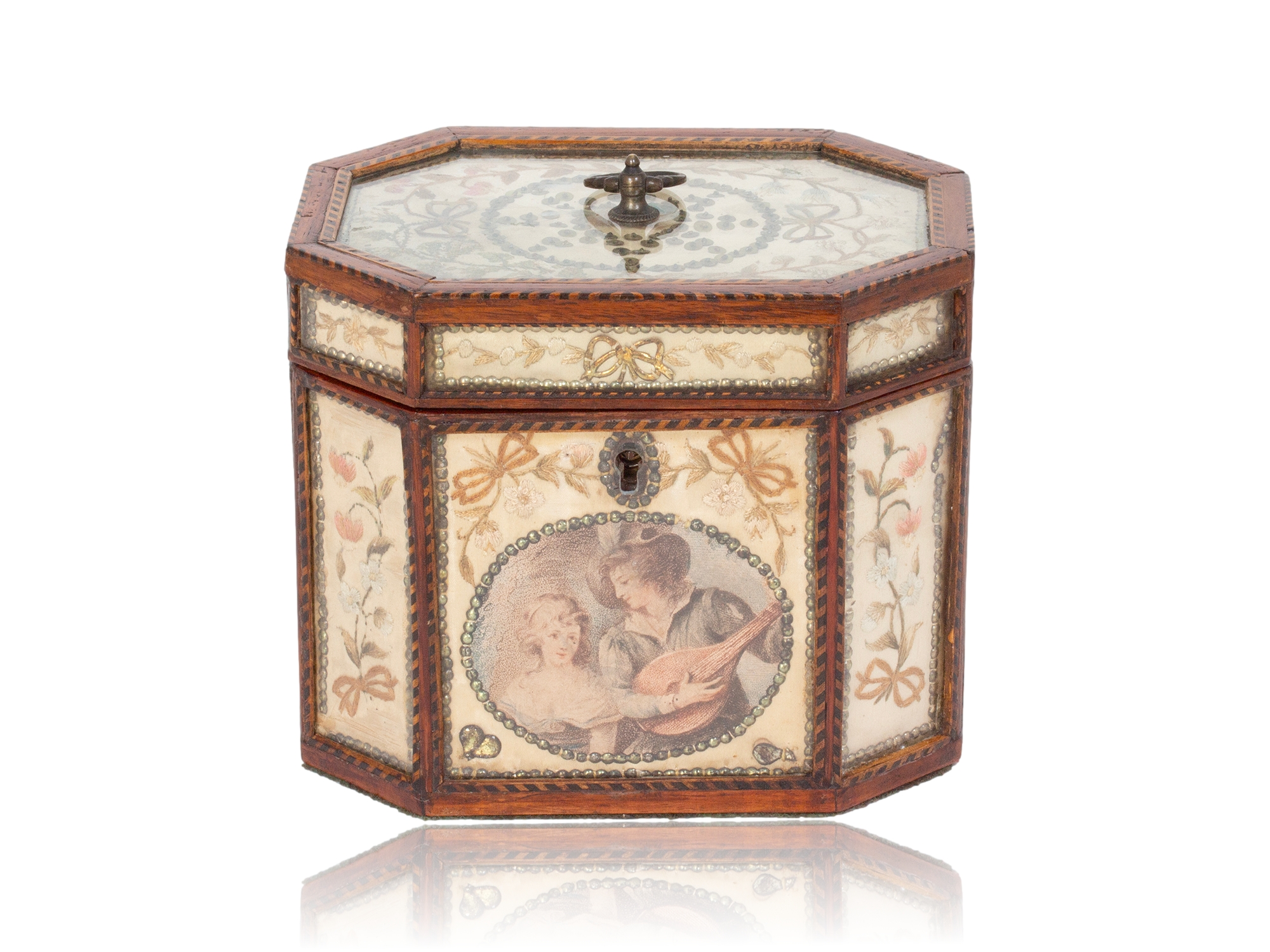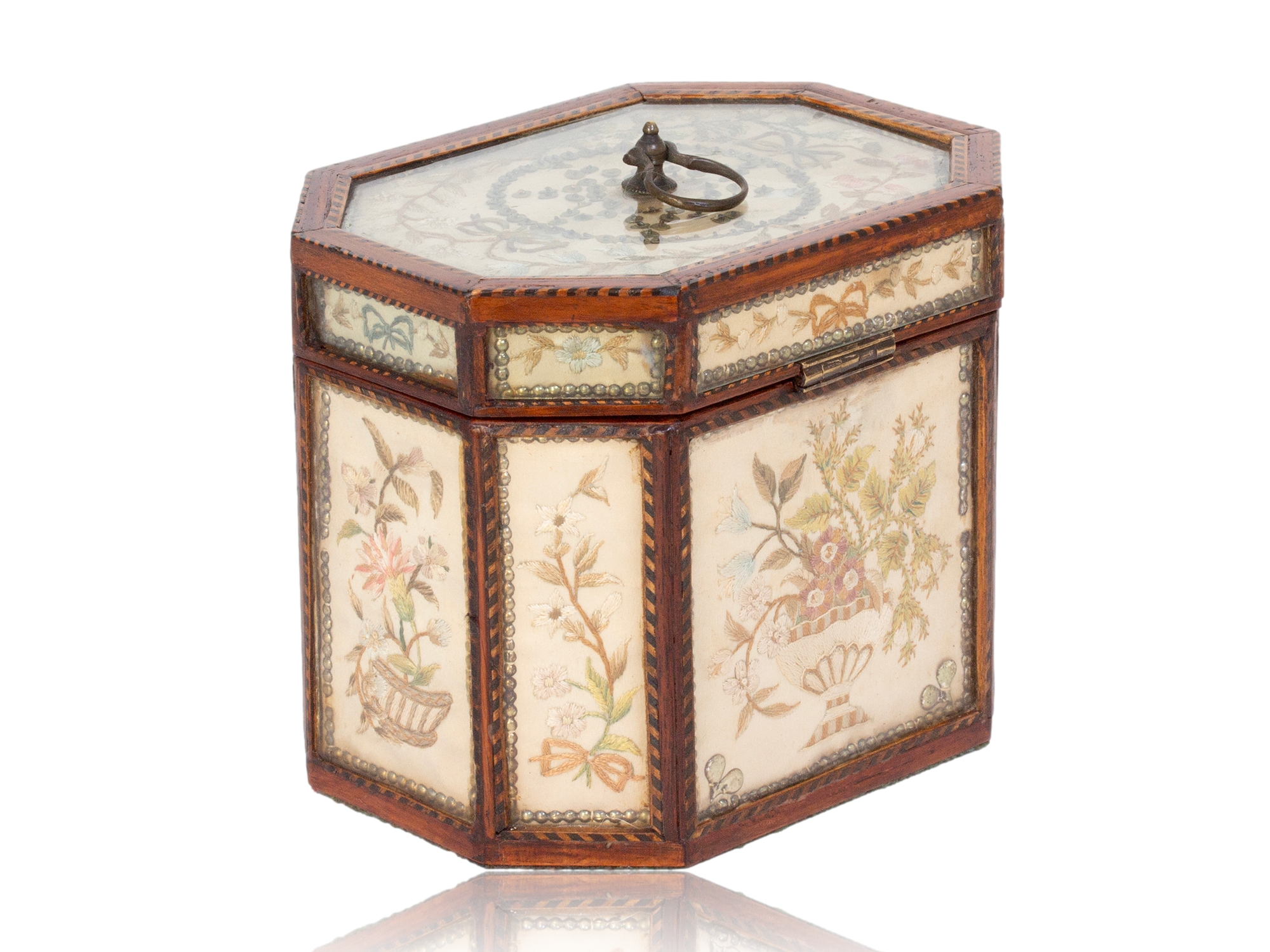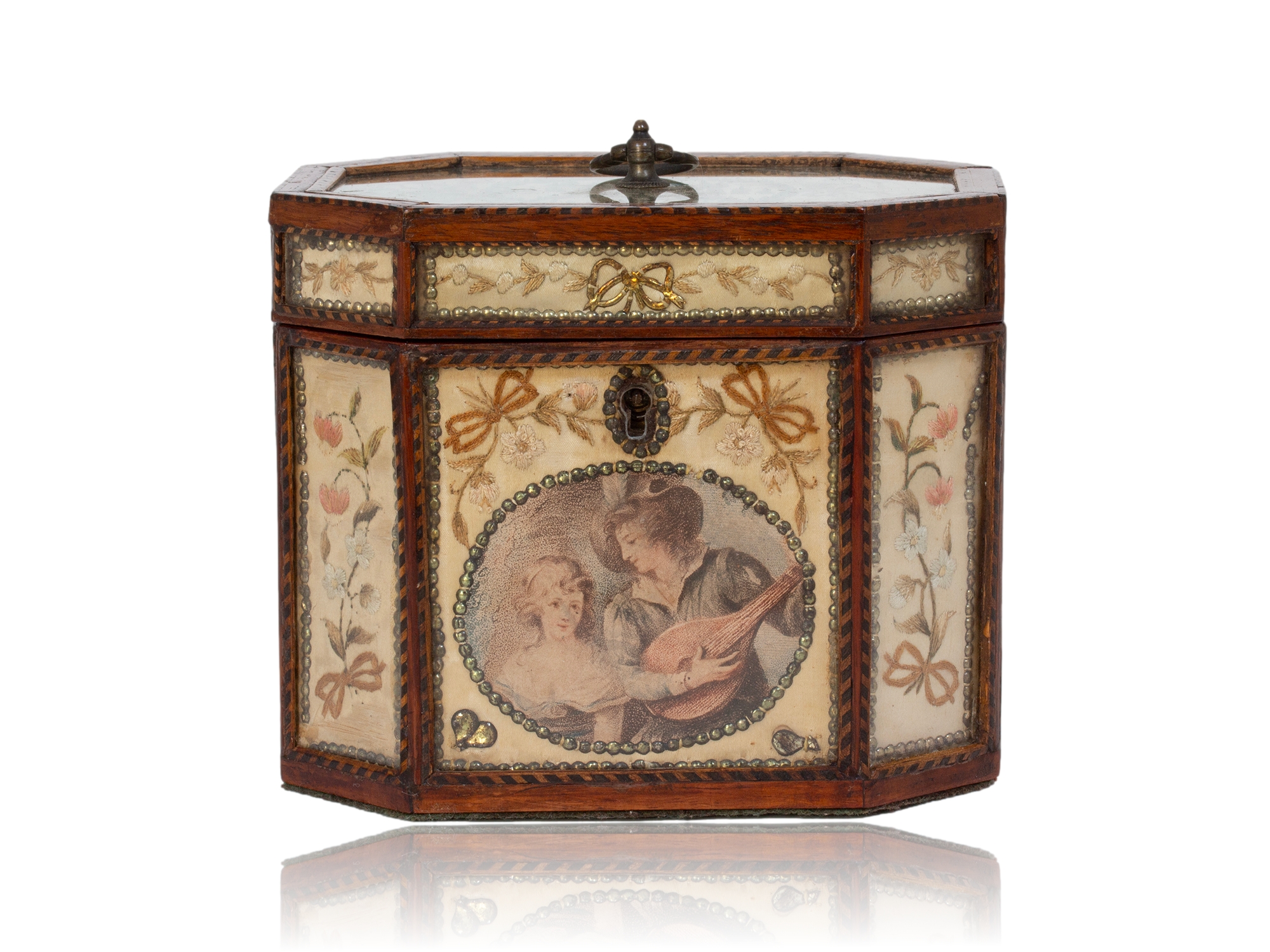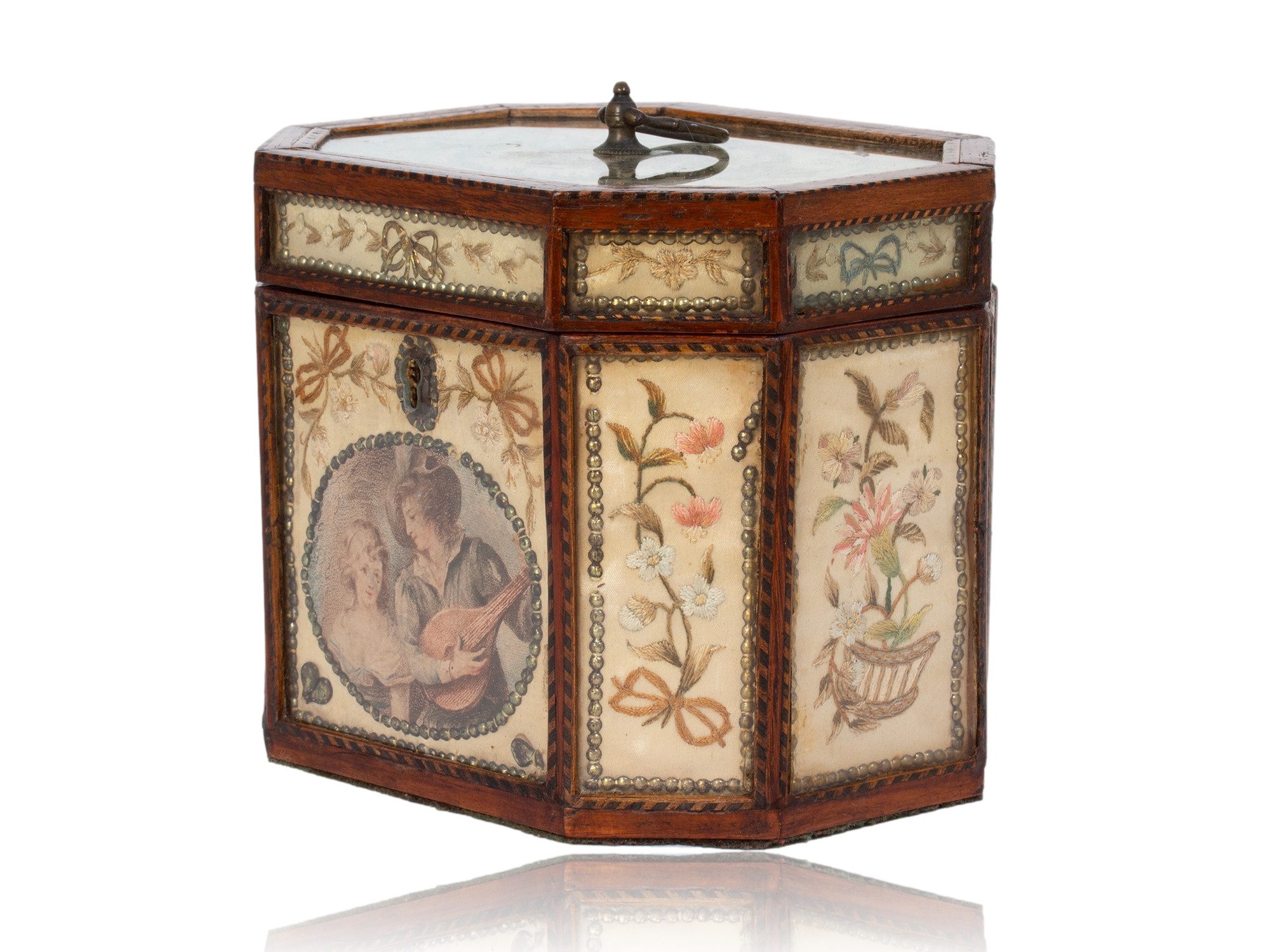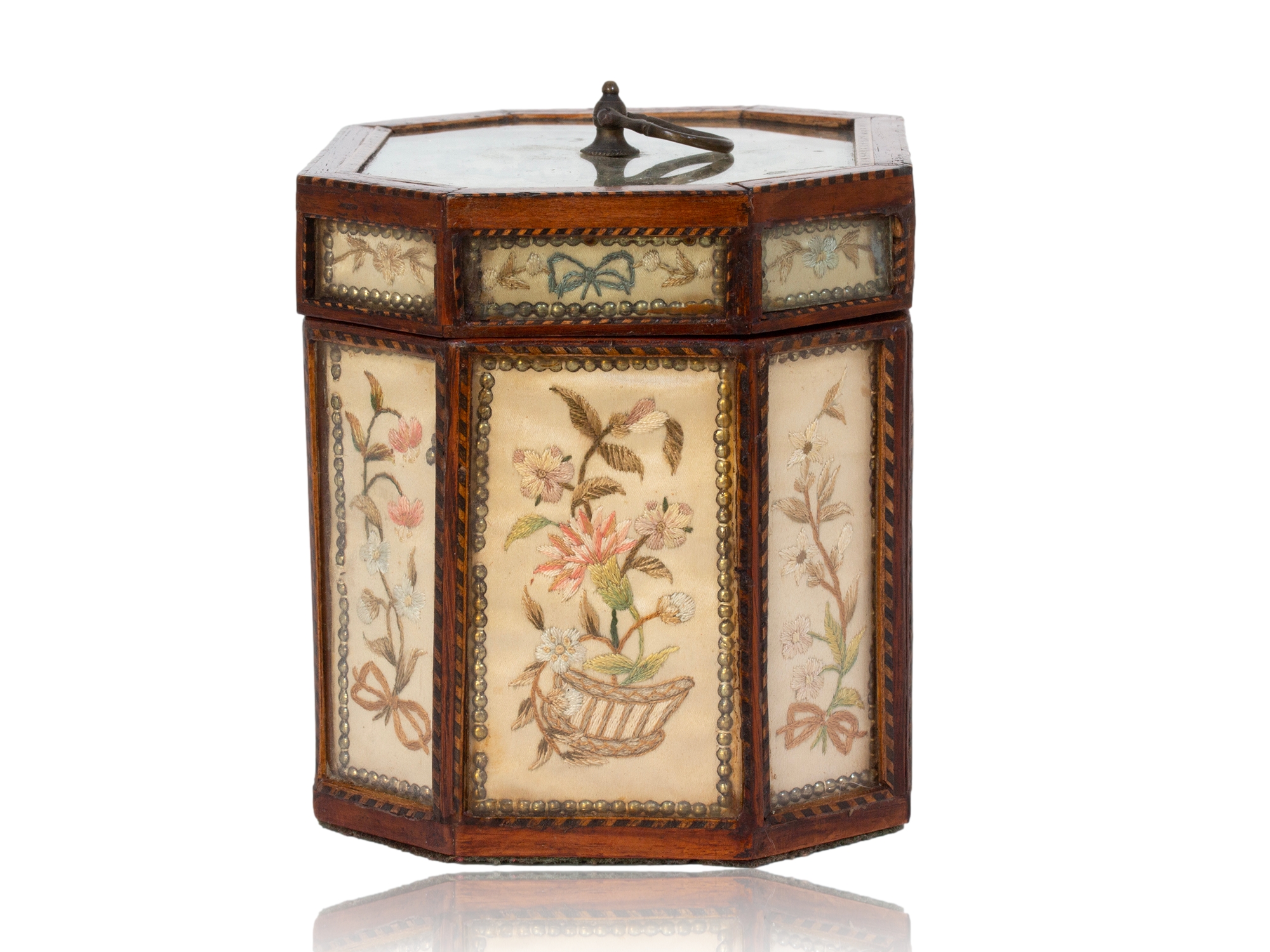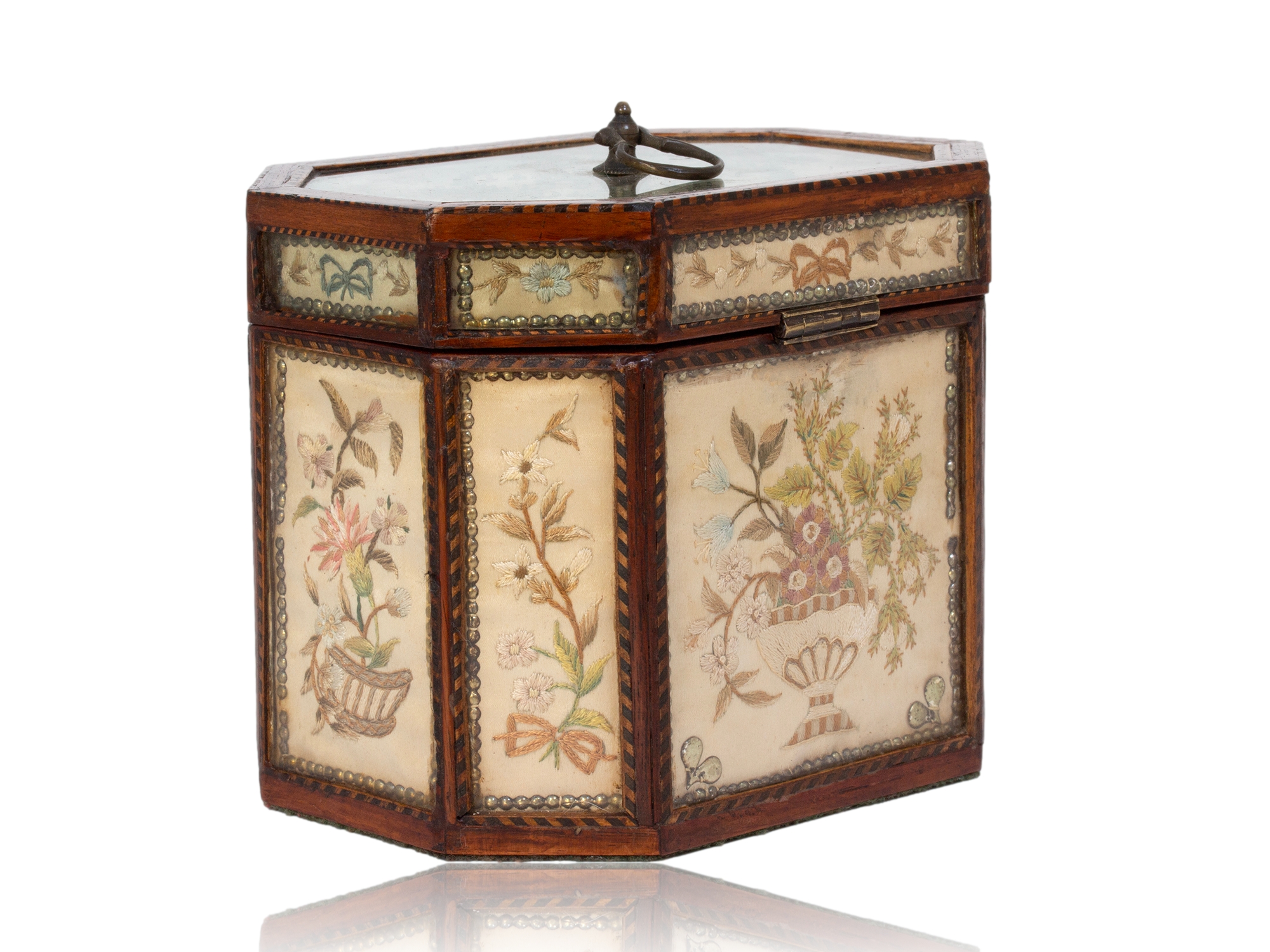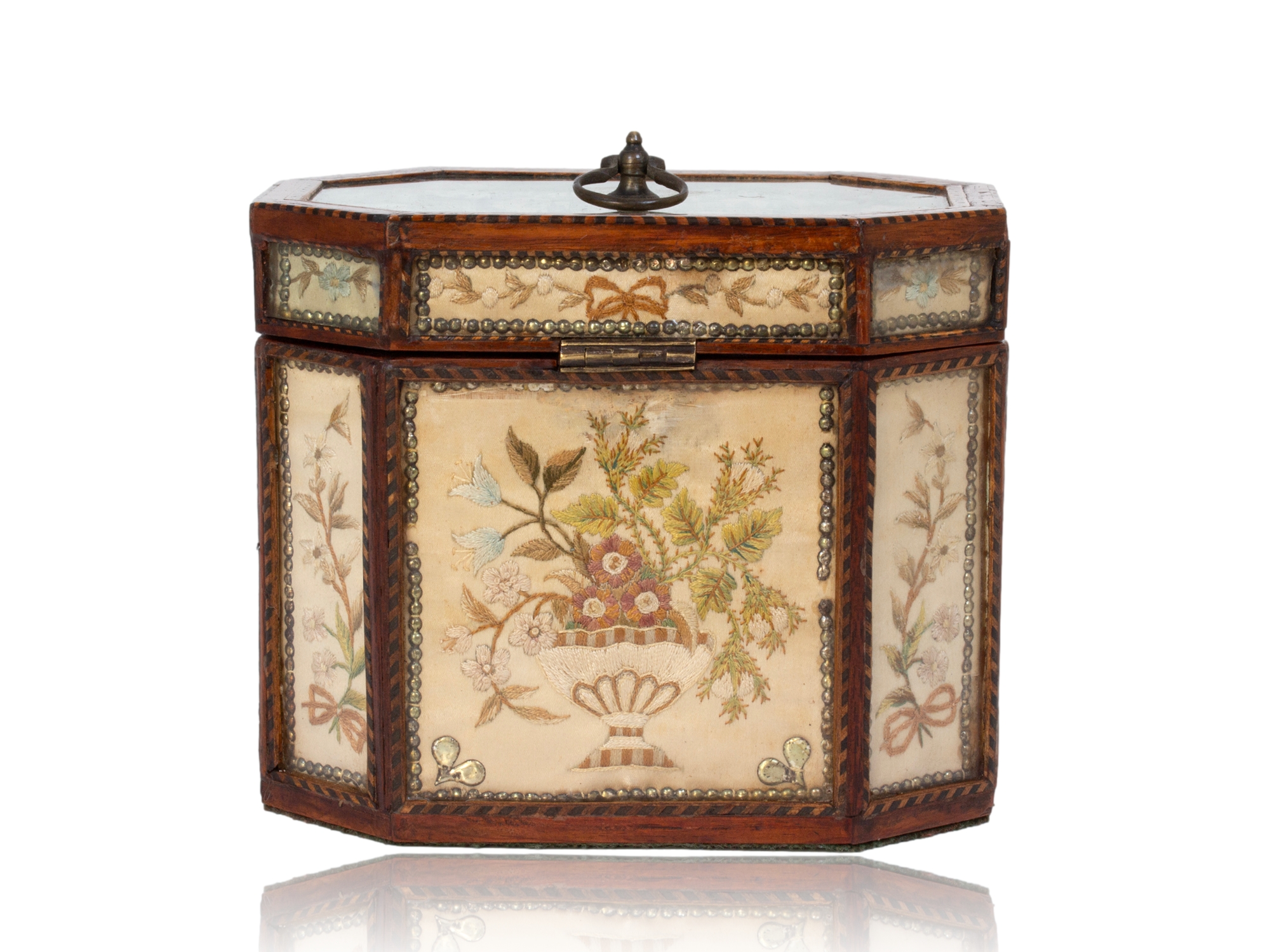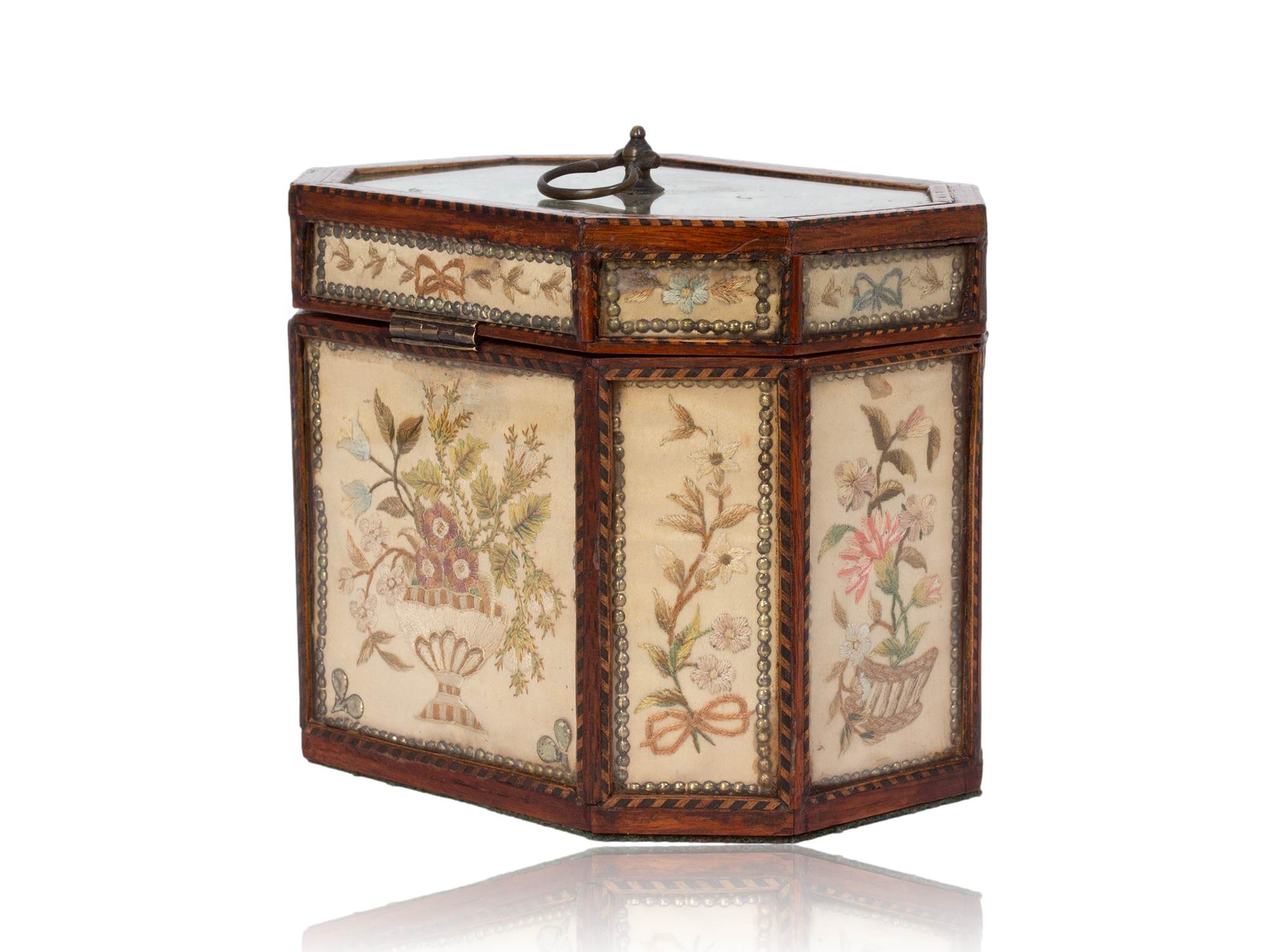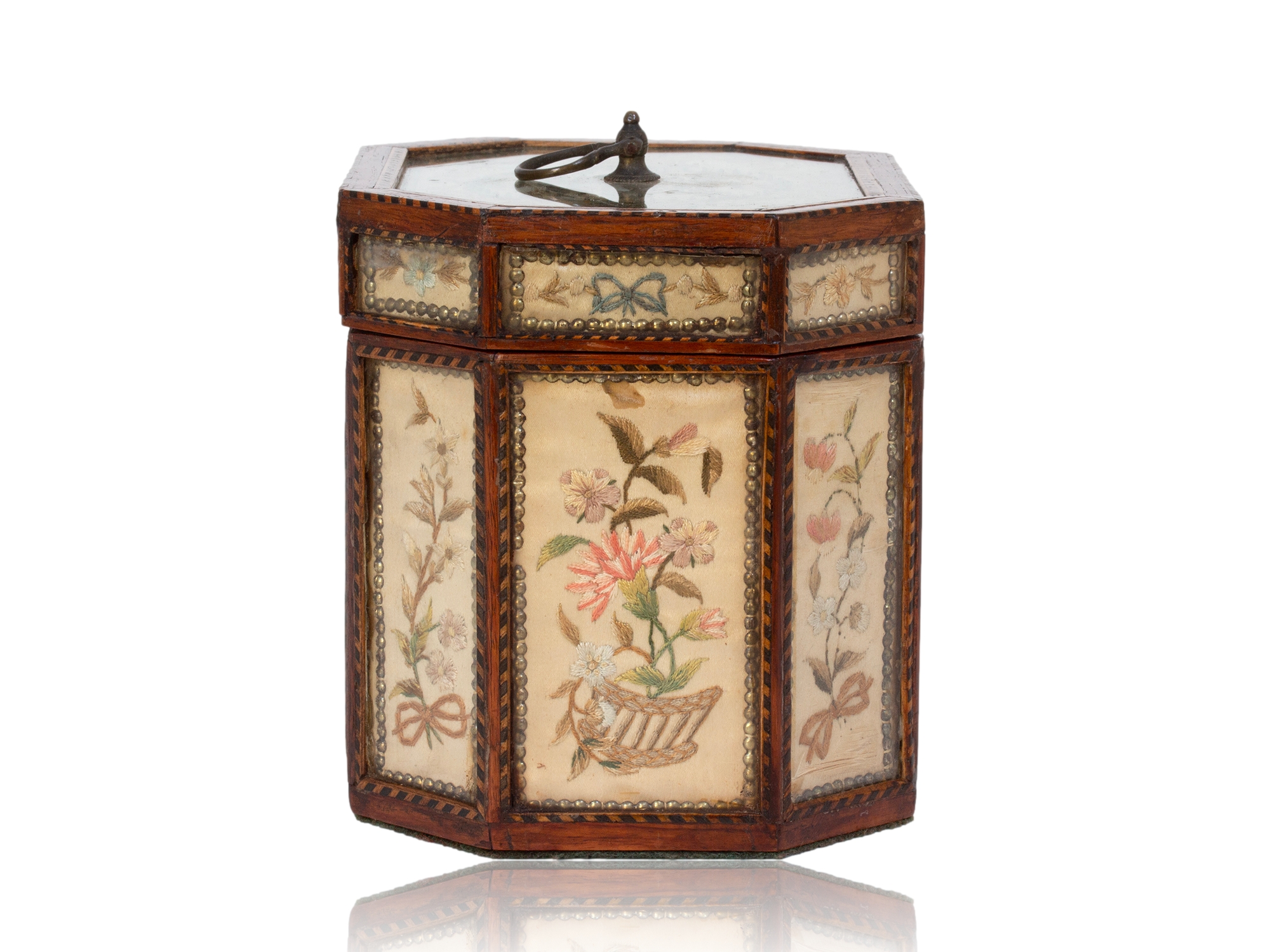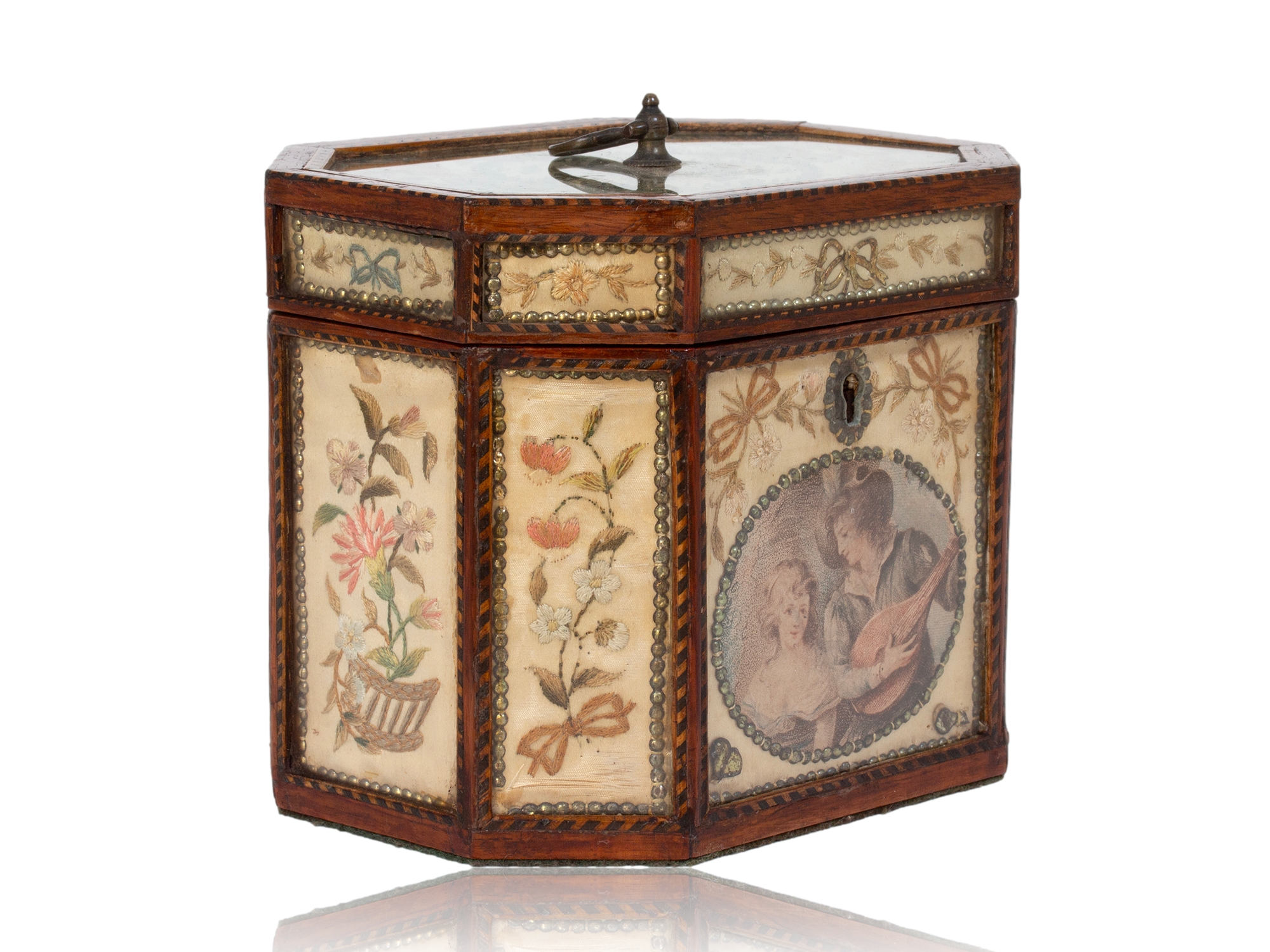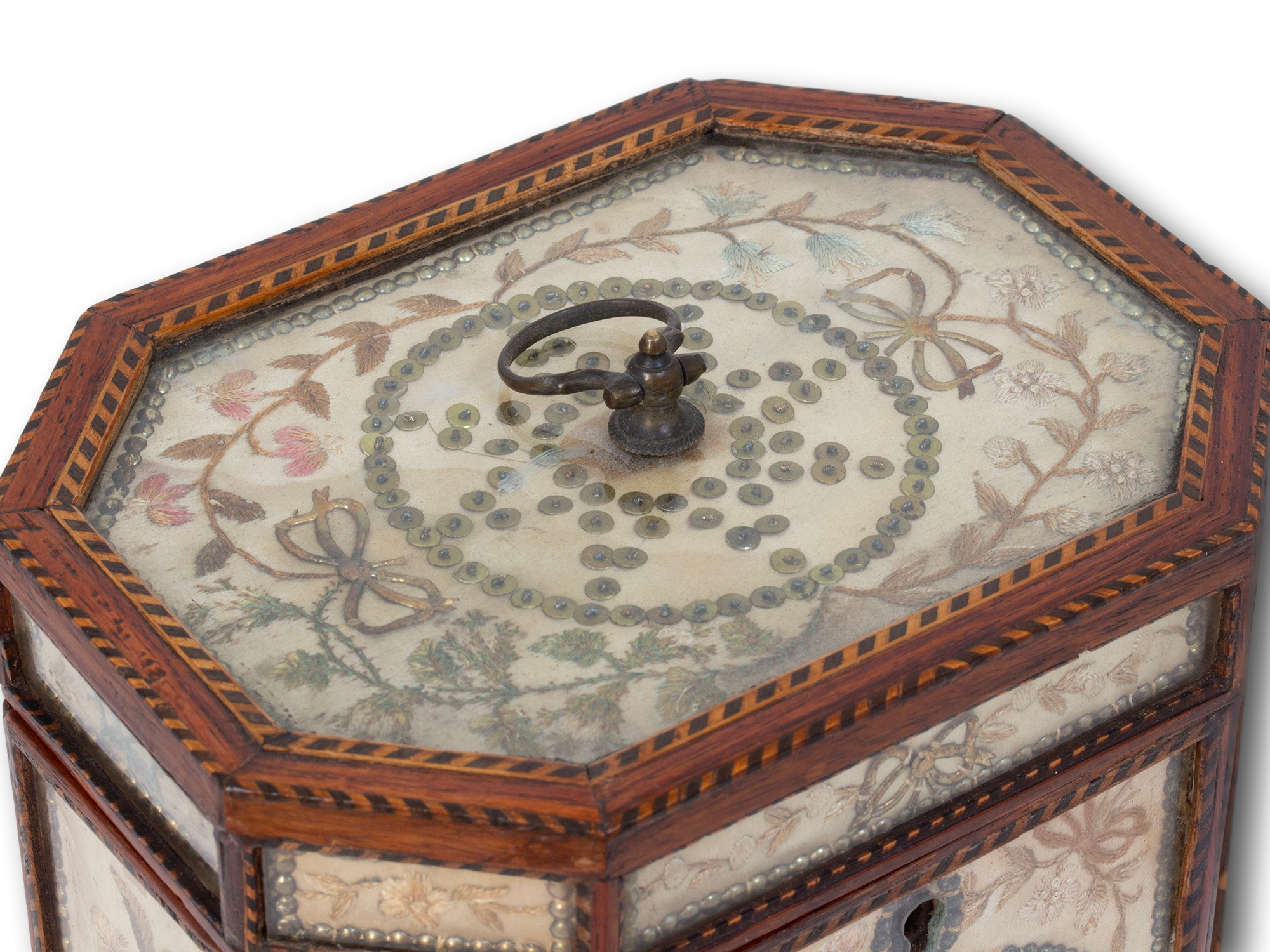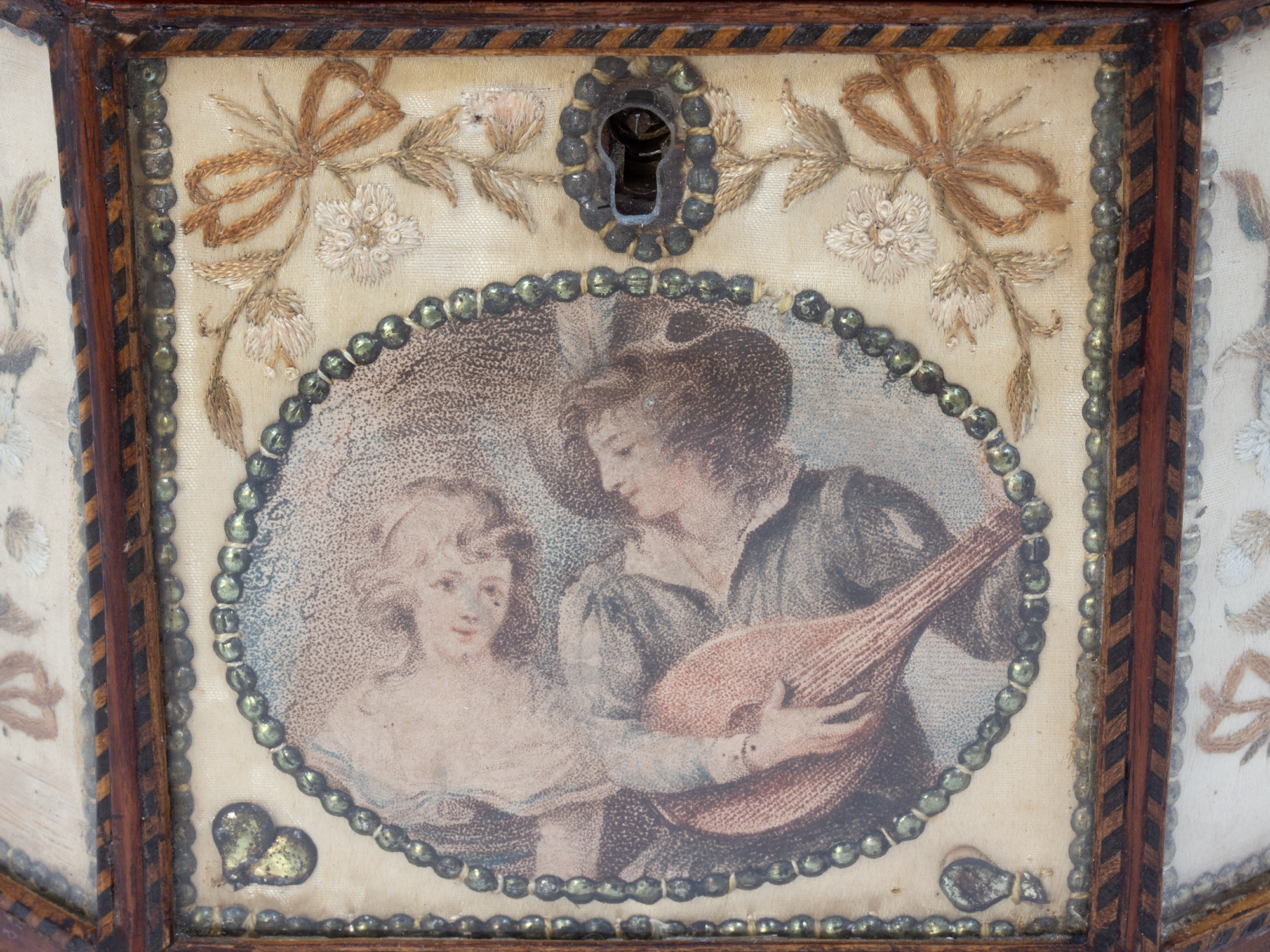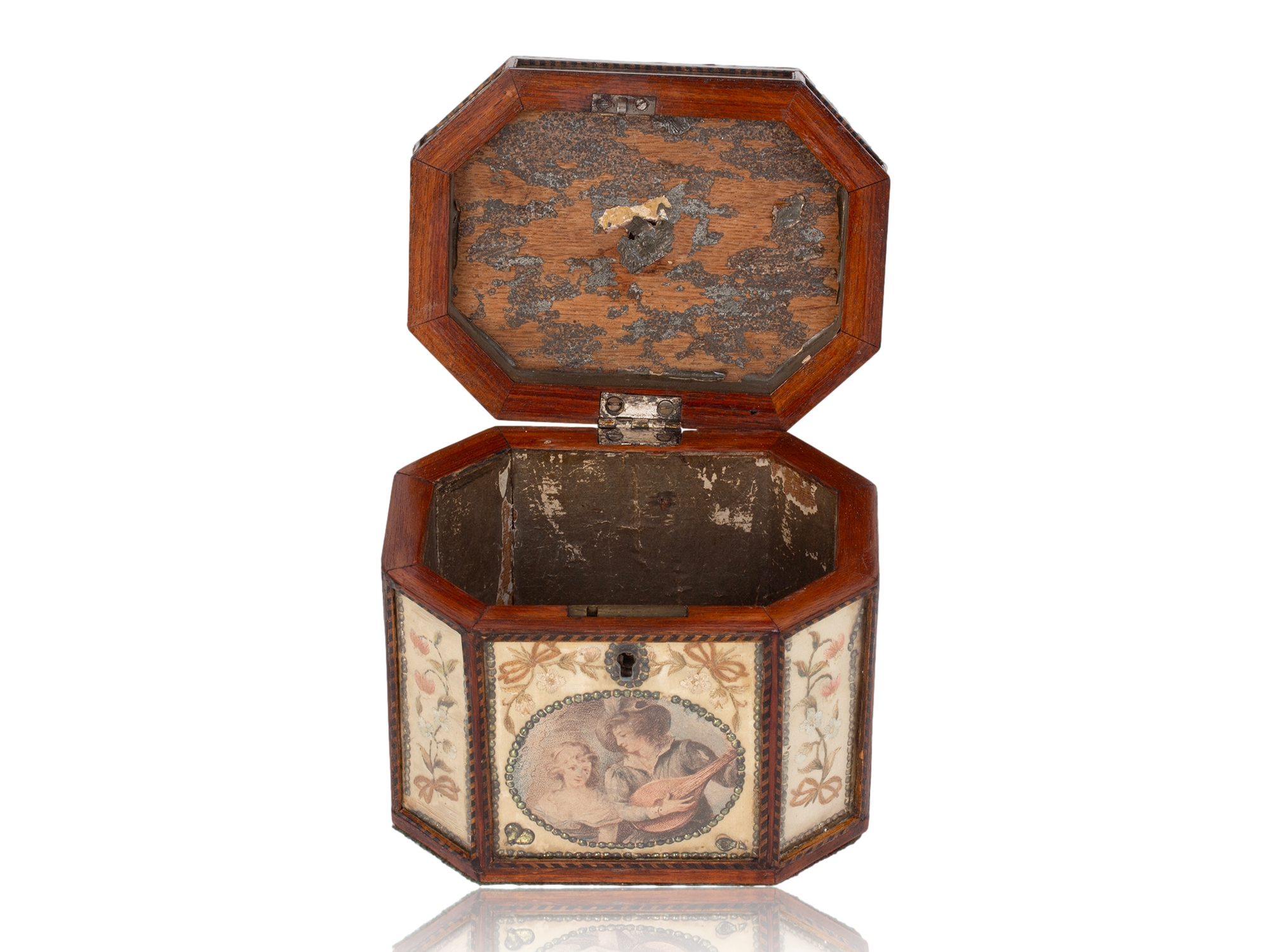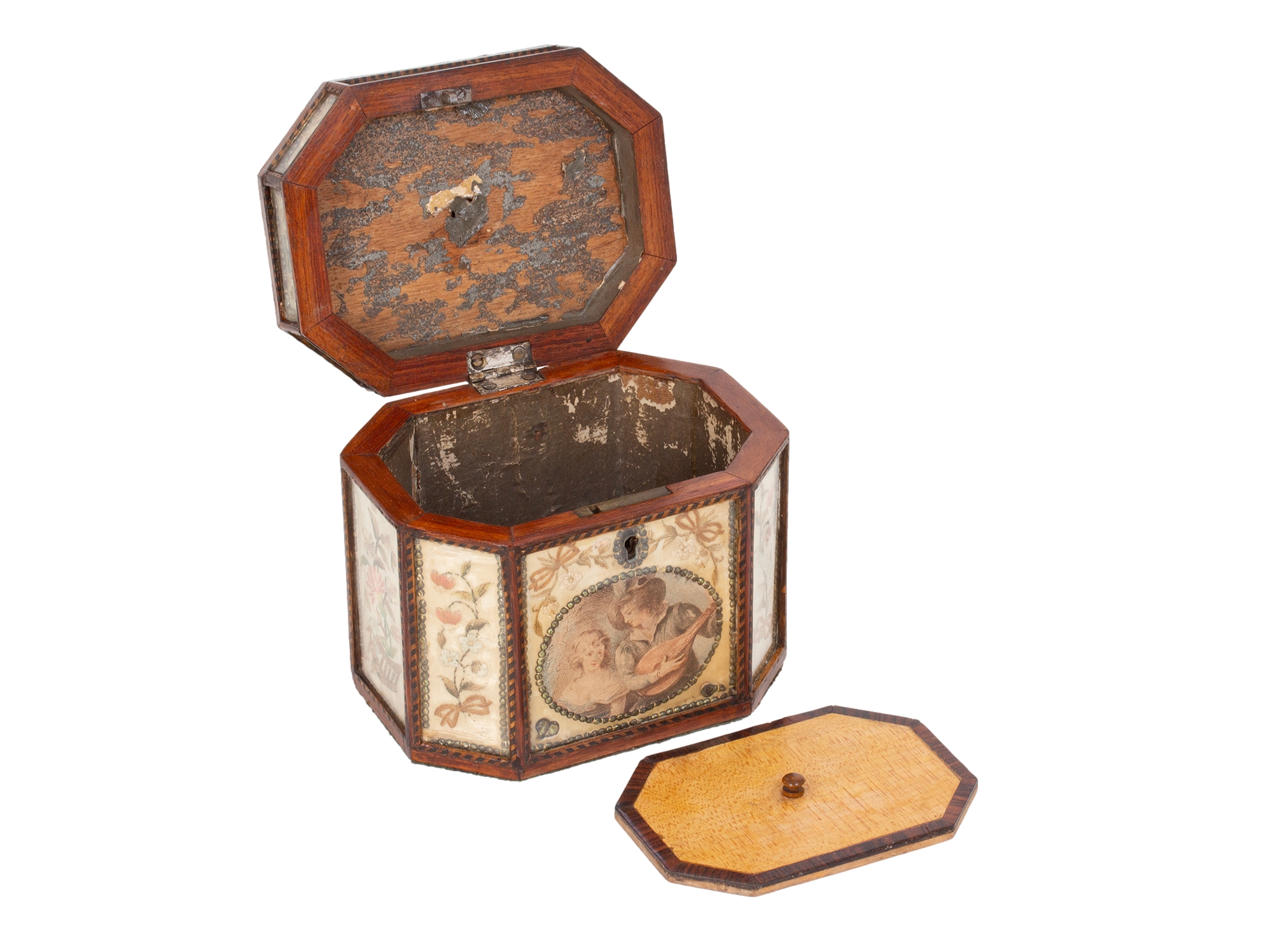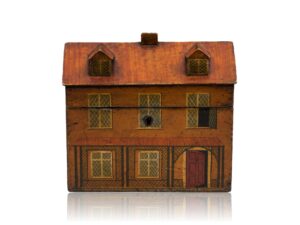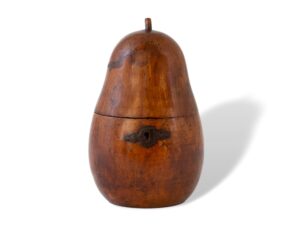Georgian Glazed Silk Embroidered Tea Caddy
£3,995.00
Octagonal Shape with Glazed Panels From our Tea Caddy collection, we are delighted to bring to market this wonderful example Georgian Glazed Silk Embroidered Tea Caddy. The Tea Caddy of squared octagonal shape with canted corners mounted in a Mahogany... Read More
Silk Embroidered Tea Caddy with seventeen panels and traces of the original foil silver lining

| Dimensions | 14 × 10.5 × 11.5 cm |
|---|---|
| Country | |
| Medium | |
| Period | |
| Year | |
| SKU | 501632AVCE |
Description
Description
Octagonal Shape with Glazed Panels
From our Tea Caddy collection, we are delighted to bring to market this wonderful example Georgian Glazed Silk Embroidered Tea Caddy. The Tea Caddy of squared octagonal shape with canted corners mounted in a Mahogany frame with glazed panels displaying seventeen individual silk embroidered panels with flower and bow motifs. The front panel features a larger oval cartouche with a male courting a female while playing a mandolin the exterior is finished with each panel framed with boxwood and ebony checkered stringing. The interior of the tea caddy features a solid Sycamore floating lid with tulipwood edging and a turned handle. The interior of the tea caddy compartment contains traces of the original silver foil lining. The Georgian Glazed Silk Embroidered Tea Caddy dates to the late 18th century circa 1775 and the reign of George III.
Mahogany is the name given to many types of tropical hardwood and can be found in Africa, India and South America, most of which are a red-brown colour with a fine, even grain. This makes it easily workable and gives it a durable finish which attributes to its popularity with many kinds of furniture.
Boxwood “Buxus sempervirens” can be found in Europe, Northwest Africa and Southwest Asia. It is a light cream that turns darker to brown when exposed to light. The trees are very small meaning it is suited to smaller projects like edging or inlay instead of veneers.
Ebony is often almost completely black with very little visible grain often with a subtle red/purple hue. This wood is very expensive due to the slow-growing trees which can often be gnarly affecting the yield of straight workable wood. Most ebonies are very dense making work with hand tools very difficult and can quickly blunt cutting tools. This density however offers an excellent finish on turned items.
Sycamore also known as Harewood is a member of the Maple family, found in Europe. It is light yellow in colour and is often a very clean wood, with a straight, fine grain. The wood is often pippy. However, these pips are usually a very similar colour to the rest of the wood making them hardly visible.
Tulipwood is also known as Brazilian Tulipwood, Brazilian Pinkwood and Bahia Rosewood. It is found in South America, mainly Brazil. The colour is warm yellow with streaks or brown-red grain.
Georgian, a period in British history dating from 1714-1837, the Georgian era after the Hanoverian kings George I, George II, George III and George IV.
With every purchase from Mark Goodger Antiques, you will receive our latest catalogue, a Certificate of Authenticity, detailed care instructions for your chosen piece and an independent invoice (for insurance purposes) will be enclosed. As well as being protected by a no-hassle, money-back policy, your piece will be entirely insured during the shipping process to ensure the safety of your item.
Additional information
Additional information
| Dimensions | 14 × 10.5 × 11.5 cm |
|---|---|
| Country | |
| Medium | |
| Period | |
| Year | |
| SKU | 501632AVCE |
